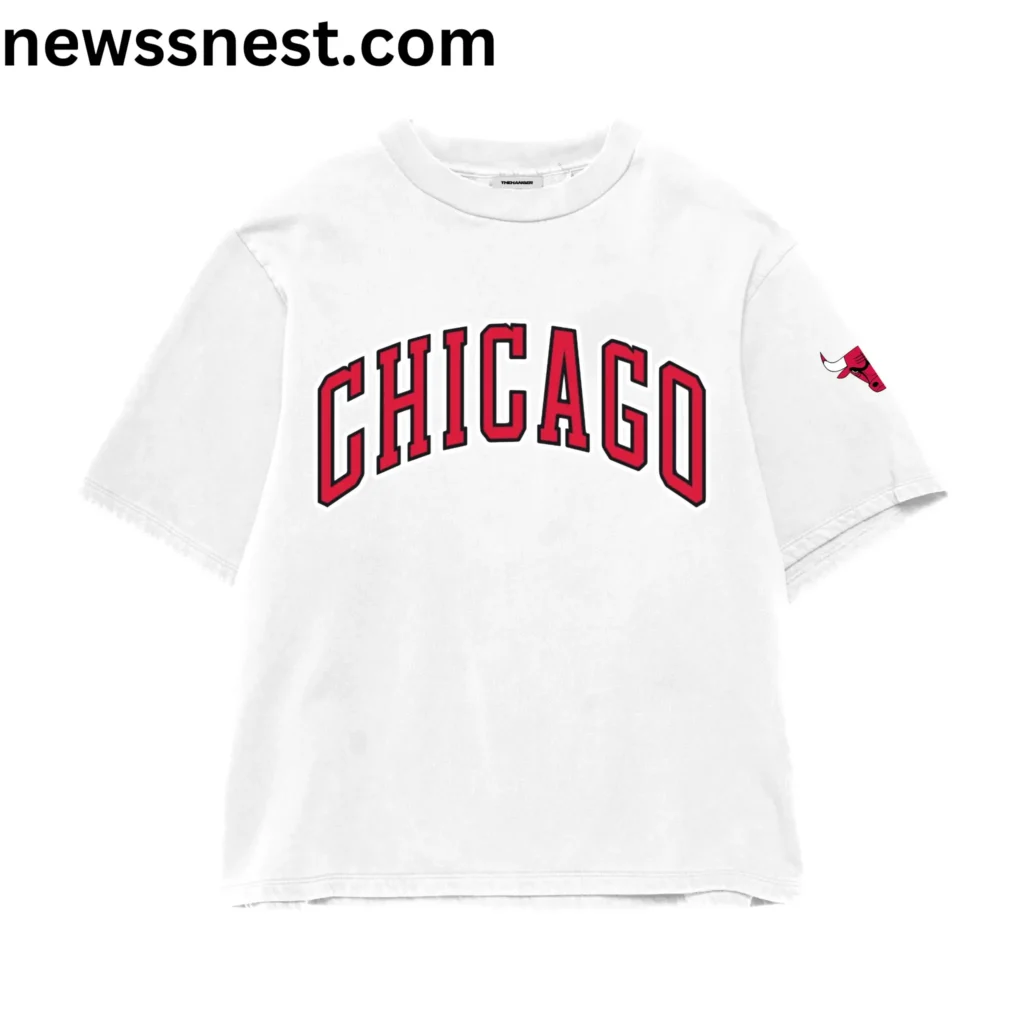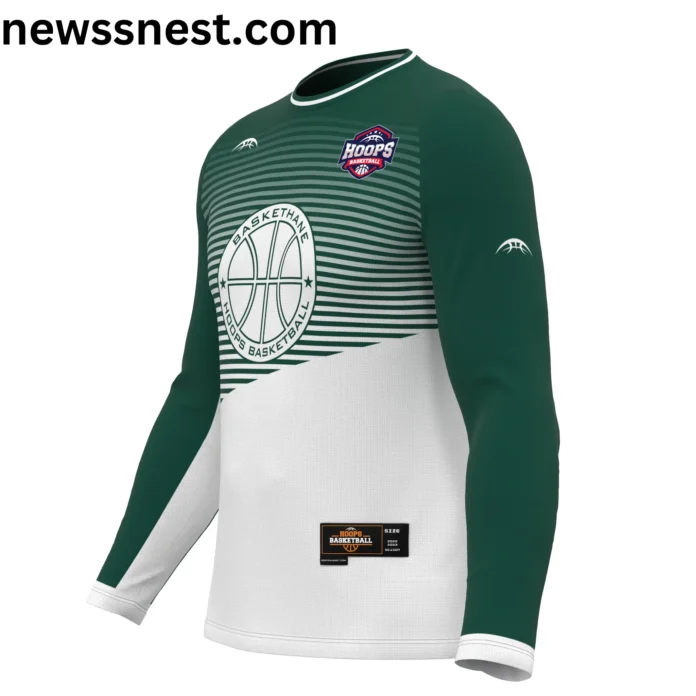Basketball shirts are an iconic part of the sport, acting as both functional attire and a symbol of team identity. Over the years, they have undergone significant transformations, reflecting changes in technology, fashion, and sports culture. In this article, we’ll explore the history, design evolution, materials, and significance of the basketball shirt in modern sports and fashion.
The Origins of the Basketball Shirt
The Birth of Basketball
Basketball was invent by Dr. James Naismith in December 1891 as a way to keep athletes active during the winter months. The first basketball game was play with a soccer ball and peach baskets as goals. At that time, the players wore regular athletic wear, which was typically compose of woolen shirts and knickers. This attire was quite restrictive and impractical for the fast-paced game.
Early Basketball Shirts
As basketball grew in popularity, the need for specialized athletic wear became apparent. Early basketball shirts were simple, often made from cotton or wool. These garments were not yet design for performance but rather for modesty and uniformity. Teams would usually wear matching shirts, sometimes with basic numbers or no numbers at all.
The emergence of basketball-specific jerseys began in the 1920s and 1930s, where players would wear sleeveless tops to allow for greater arm movement. These early shirts were still very basic and lacked many of the features we associate with modern basketball jerseys.
Overview of wpial football news
Design Evolution of the Basketball Shirt
The 1950s and 1960s: Beginning of Style
By the 1950s and 1960s, basketball shirts started to become more functional. The first notable change was the introduction of numbers on the shirts, which made it easier to identify players on the court. The material also began shifting from wool to more breathable fabrics like polyester, which allowed players to stay cooler during intense gameplay.
Teams started to incorporate more distinct styles into their jerseys, and colors became a more prominent feature. As television broadcasts of games became more common, teams wanted their jerseys to be visually distinct to make it easier for fans to follow the game.
The 1980s and 1990s: A Cultural Revolution
The 1980s and 1990s were a transformative time for basketball shirts, thanks in part to the rise of superstars like Michael Jordan. The popularity of the NBA soared during this period, and as a result, the designs of basketball shirts became more fashion-forward. Brands like Nike, Adidas, and Reebok took over the sports apparel market, producing jerseys that were not only functional but also aesthetically appealing.
In the 1990s, the NBA introduced its iconic team logos and jersey designs. The shorts also became longer, and jerseys were often worn baggier. This era saw the peak of jersey sales, as basketball shirts transcended beyond the court and became a popular item for casual wear. Fans began wearing jerseys of their favorite players like Michael Jordan, Kobe Bryant, and Shaquille O’Neal.
The 2000s and Beyond: Performance Meets Fashion
In the 2000s, basketball shirt design reached a new level of innovation. Performance fabric technology advance, with jerseys now being make from lightweight, moisture-wicking materials that help keep players cool and dry. The NBA even introduce a new design with the Nike “Swingman” jersey, which was tailor to fit better and move with the player’s body.
Off the court, basketball shirts continued to maintain a strong cultural relevance. Jerseys became symbols of identity, not just for the players who wore them, but also for the fans who collected and wore them. The customization of jerseys with player names, team logos, and various colors allowed fans to display their loyalty to their favorite players and teams.
The Components of a Basketball Shirt
Fabric and Materials
One of the key elements in the evolution of basketball shirts has been the development of fabrics that enhance performance. Early jerseys were often make from cotton or wool, which were heavy and didn’t provide much ventilation. Over time, manufacturers turned to synthetic materials like polyester, nylon, and elastane.
- Polyester: Polyester is now the most commonly use material in basketball shirts. It is lightweight, durable, and moisture-wicking, allowing players to stay dry during the game.
- Mesh Panels: Many basketball jerseys incorporate mesh panels for enhanced breathability and ventilation, helping players maintain comfort even during intense physical activity.
- Spandex and Elastane: These materials are often blend into jerseys to provide stretch, ensuring that the shirt moves with the player’s body. They offer a snug fit without compromising comfort or mobility.
Overview of real madrid cf formation

Design Features
Modern basketball shirts come with a variety of design features that enhance both aesthetics and functionality. These include:
- Sleeveless Design: Basketball shirts typically feature a sleeveless cut to allow full range of motion for the arms.
- V-Neck or Scoop Neck: The collar design has evolved, with V-necks and scoop necks being common choices. These styles contribute to a sleek and modern look.
- Numbering and Team Logos: Large, bold numbers are often feature on the front and back of the shirt to make players easily identifiable. Team logos and mascots add a touch of personality to the design.
- Customizability: Many jerseys allow players to customize their shirts with personal names or numbers. This option has become especially popular among fans who want to emulate their favorite professional players.
The Cultural Impact of Basketball Shirts
Basketball Shirts as Fashion Statements
Basketball shirts have become a significant part of pop culture, especially within hip-hop and urban fashion. In the 1990s, the influence of basketball players like Michael Jordan, Allen Iverson, and Kobe Bryant, combine with the rise of hip-hop culture, led to a trend where jerseys were worn off the court as casual fashion.
Wearing a basketball shirt was a way for fans to identify with their favorite teams or players. The style spread beyond the sports world and was embrace by celebrities, musicians, and streetwear enthusiasts. Iconic brands like Mitchell & Ness, Adidas, and Nike collaborated with the NBA to produce exclusive jerseys that were covete both for their performance and style.
Overview of real madrid cf formation
A Symbol of Team and Individual Identity
For athletes, a basketball shirt is more than just a uniform—it represents their identity as part of a team and a community. The jersey is a symbol of loyalty, pride, and dedication to the sport. Fans, too, use basketball shirts to express their support for specific teams and players. Whether it’s wearing a jersey to a game or displaying one at home, basketball shirts serve as a way to celebrate the sport’s rich history and legacy.
Conclusion
From their humble beginnings as simple athletic garments to their modern status as symbols of identity and style, basketball shirts have come a long way. Today, they represent much more than just functional gear on the court. They are an integral part of basketball culture and fashion. The evolution of the basketball shirt reflects the growth of the sport itself, showcasing both the technological. Advancements in athletic apparel and the cultural significance of the game. Whether worn by professional players or fans, the basketball shirt remains a timeless and essential element of the sport.
For more great updates, keep visiting newssnest.com


Thank you for your sharing. I am worried that I lack creative ideas. It is your article that makes me full of hope. Thank you. But, I have a question, can you help me?
Your point of view caught my eye and was very interesting. Thanks. I have a question for you.
Thanks for sharing. I read many of your blog posts, cool, your blog is very good.
Your article helped me a lot, is there any more related content? Thanks! https://accounts.binance.com/en/register?ref=JHQQKNKN
Thank you for your sharing. I am worried that I lack creative ideas. It is your article that makes me full of hope. Thank you. But, I have a question, can you help me?
Your point of view caught my eye and was very interesting. Thanks. I have a question for you.
Your point of view caught my eye and was very interesting. Thanks. I have a question for you.
Thank you for your sharing. I am worried that I lack creative ideas. It is your article that makes me full of hope. Thank you. But, I have a question, can you help me?
Your article helped me a lot, is there any more related content? Thanks!
Thanks for sharing. I read many of your blog posts, cool, your blog is very good.
Your point of view caught my eye and was very interesting. Thanks. I have a question for you.
Thanks for sharing. I read many of your blog posts, cool, your blog is very good.
Your article helped me a lot, is there any more related content? Thanks!
Your article helped me a lot, is there any more related content? Thanks! https://accounts.binance.info/register?ref=P9L9FQKY
Thank you for your sharing. I am worried that I lack creative ideas. It is your article that makes me full of hope. Thank you. But, I have a question, can you help me?
Хотите найти данные о пользователе? Наш сервис поможет детальный отчет в режиме реального времени .
Используйте продвинутые инструменты для анализа публичных записей в открытых источниках.
Узнайте контактные данные или интересы через систему мониторинга с гарантией точности .
bot глаз бога telegram
Система функционирует в рамках закона , обрабатывая открытые данные .
Закажите расширенный отчет с историей аккаунтов и списком связей.
Доверьтесь проверенному решению для исследований — результаты вас удивят !
Хотите собрать информацию о человеке ? Этот бот поможет полный профиль в режиме реального времени .
Воспользуйтесь уникальные алгоритмы для поиска публичных записей в соцсетях .
Выясните контактные данные или активность через автоматизированный скан с гарантией точности .
глаз бога бот телеграм бесплатно
Бот работает с соблюдением GDPR, обрабатывая общедоступную информацию.
Закажите детализированную выжимку с геолокационными метками и списком связей.
Попробуйте проверенному решению для digital-расследований — точность гарантирована!
Your point of view caught my eye and was very interesting. Thanks. I have a question for you.
Can you be more specific about the content of your article? After reading it, I still have some doubts. Hope you can help me.
Good post! We will be linking to this particularly great post on our site. Keep up the great writing
I am truly thankful to the owner of this web site who has shared this fantastic piece of writing at at this place.
Very well presented. Every quote was awesome and thanks for sharing the content. Keep sharing and keep motivating others.
Thank you for your sharing. I am worried that I lack creative ideas. It is your article that makes me full of hope. Thank you. But, I have a question, can you help me?
Nice post. I learn something totally new and challenging on websites
You’re so awesome! I don’t believe I have read a single thing like that before. So great to find someone with some original thoughts on this topic. Really.. thank you for starting this up. This website is something that is needed on the internet, someone with a little originality!
Thank you for your sharing. I am worried that I lack creative ideas. It is your article that makes me full of hope. Thank you. But, I have a question, can you help me?
This answered all my questions.
Thanks for sharing. I read many of your blog posts, cool, your blog is very good.
Thank you for your sharing. I am worried that I lack creative ideas. It is your article that makes me full of hope. Thank you. But, I have a question, can you help me? https://www.binance.info/ES_la/register-person?ref=T7KCZASX
Thanks for sharing. I read many of your blog posts, cool, your blog is very good.
Thanks for sharing. I read many of your blog posts, cool, your blog is very good.
I don’t think the title of your article matches the content lol. Just kidding, mainly because I had some doubts after reading the article.